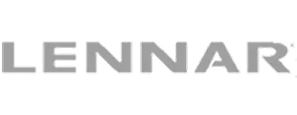Key takeaways
- Smart building technology in Los Angeles is growing rapidly due to sustainability goals, competitive markets, and city-led innovation initiatives.
- Features such as energy management, IoT-enabled operations, and tenant experience tools are transforming how properties are managed.
- AI, predictive analytics, and integrated platforms will play a larger role in the city’s smart building future.
- Property owners can benefit from lower operating costs, improved tenant retention, and increased asset value by adopting smart building solutions.
- Choosing the right technology requires clear goals, compatibility checks, scalability planning, and guidance from local experts.

Los Angeles is quickly becoming a center for smart building innovation. With its blend of luxury real estate, competitive commercial markets, and progressive sustainability policies, the city is primed for adopting cutting-edge property and smart building technology.
The Los Angeles smart city initiative continues to encourage property managers, developers, and owners to integrate smart building solutions that improve efficiency, enhance tenant experience, and prepare properties for the future.
In this post, you’ll learn what smart building technology is, why Los Angeles is adopting it, and the benefits of investing in a smart building as a property manager.
Navigate this post:
- What is smart building technology?
- Why Los Angeles is leading in smart building adoption
- Key smart building features in Los Angeles properties
- Smart building trends shaping Los Angeles
- Benefits of smart building technology for LA property owners
- How to choose the right smart building solution in Los Angeles
- The future of smart building technology in Los Angeles
- Smart building technology Los Angeles FAQs
What is smart building technology?
Smart building technology refers to the use of connected systems and automation to manage a property’s operations more efficiently. A smart building control system integrates multiple functions such as lighting, HVAC, security, and energy monitoring into one platform.
IoT smart buildings use networks of sensors and devices that collect and share real-time data. This data is processed through cloud-based management software, allowing building operators to monitor systems remotely and automate adjustments based on usage patterns.
While smart home Los Angeles projects often focus on individual units or residences, commercial smart building systems manage operations on a much larger scale, coordinating technology across multiple floors or even entire campuses.
Why Los Angeles is leading in smart building adoption
Several factors are driving the rise of smart building technology in Los Angeles, and one of the most influential is the city’s focus on sustainability mandates and energy efficiency goals. California’s building codes, including Title 24, set high standards for reducing energy consumption, which encourages property owners to invest in energy-saving systems and technologies.
What’s more, the city’s competitive property markets also play a role. In both commercial and multifamily sectors, property managers are integrating smart building features to attract tenants and maintain a strong position in the market. Modern amenities such as these help differentiate properties and meet growing tenant expectations.
Another key factor is the influence of the local technology sector. Many tech companies and smart buildings companies are based in or operate within Los Angeles, introducing innovative products and solutions that make advanced building automation more accessible.
Finally, Los Angeles’s smart city initiatives are pushing for infrastructure upgrades that align with broader sustainability and digital transformation goals. These programs aim to connect buildings to a larger network of citywide systems, creating a more integrated and efficient urban environment.
Key smart building features in Los Angeles properties
- Energy management and sustainability
- Access control and security
- IoT-enabled operations
- Tenant experience technology
1. Energy management and sustainability
Smart HVAC and lighting systems adjust automatically based on occupancy and time of day to help reduce energy waste. Many properties also integrate renewable energy sources, such as solar panels, to further support sustainability goals. In addition, compliance with California Title 24 ensures that buildings meet the state’s strict energy efficiency standards.
2. Access control and security
Smartphone-based entry systems and facial recognition technology make access more convenient for tenants and staff while enhancing security. Smart building control dashboards enable real-time monitoring of security systems, and visitor management tools help track guest access to improve overall safety.
3. IoT-enabled operations
Sensors placed throughout the property monitor occupancy, temperature, and air quality to maintain comfort and safety. Predictive maintenance alerts allow staff to address potential issues before they lead to costly repairs, keeping building systems operating smoothly.
4. Tenant experience technology
Smart apartment technology gives residents and tenants an easy way to submit service requests or reserve shared amenities. Integrated communication platforms ensure that occupants receive timely updates about building events, maintenance schedules, and other important information.
Smart building trends shaping Los Angeles
- Predictive analytics. By collecting and analyzing real-time data from sensors, IoT-enabled properties can identify patterns in energy usage, equipment performance, and occupancy trends. This allows property managers to anticipate maintenance needs, adjust systems proactively, and optimize resource allocation to reduce costs and improve efficiency.
- Property management software integration. Modern smart building platforms are increasingly designed to work seamlessly with existing property management tools. This integration enables centralized control of building systems, streamlined tenant communication, and automated workflows for tasks like work orders, billing, and reporting.
- Adaptable office layouts. As businesses continue to combine remote and in-office work, property owners are rethinking office configurations. Smart building features such as modular lighting, adjustable HVAC zones, and space booking systems allow workspaces to be easily reconfigured to meet changing occupancy levels and tenant needs.
- Sustainability. Tenants are placing greater importance on environmental responsibility when selecting a property. Buildings equipped with energy-efficient systems, renewable energy integration, and real-time sustainability reporting are more attractive to eco-conscious businesses and residents.
- Multifamily and mixed-use developments. Features such as app-controlled lighting, climate control, and smart appliances, once reserved for single-family residences, are now being implemented at scale in larger properties. This enhances the living experience for residents while providing property managers with data and tools to maintain consistent service quality.
Discover these smart building technology trends:
Benefits of smart building technology for LA property owners
- Lower operating costs
- Improved tenant attraction and retention
- Enhanced building value
- Stronger compliance with regulations
- Streamlined property management operations
Lower operating costs
Smart building technology helps property owners in Los Angeles reduce expenses across multiple areas of operation. Automation ensures that systems like lighting, HVAC, and irrigation run only when needed, which cuts down on wasted energy and water use. Predictive maintenance tools can flag equipment issues before they escalate into costly repairs, minimizing downtime and extending the life of building assets. Over time, these efficiencies can lead to substantial savings on utility bills and maintenance budgets.
Improved tenant attraction and retention
Modern smart building features create a more appealing environment for tenants who value convenience, efficiency, and technology integration. Features such as app-based access control, automated lighting, and smart climate systems can improve daily living or working experiences. In competitive Los Angeles rental and office markets, these enhancements can help properties stand out, increasing occupancy rates and encouraging tenants to renew their leases.
Enhanced building value
Upgrading a property with advanced smart building solutions can significantly increase its market value. Enhanced energy-efficient apartments, better security, and improved tenant satisfaction can all contribute to higher appraisals. Investors are also more likely to view properties with future-ready infrastructure as stronger, long-term assets, which can improve resale potential and financing opportunities.
Stronger compliance with regulations
In Los Angeles, meeting California’s rigorous building codes and environmental regulations is critical. Smart building systems can help property owners stay compliant by automatically monitoring energy use, tracking water consumption, and generating reports that meet state and local requirements. This reduces the risk of penalties and positions the property as aligned with the city’s sustainability goals.
Streamlined property management operations
By centralizing building functions into a single smart building control platform, property managers can oversee security, maintenance, and tenant communications more efficiently. Remote monitoring tools allow staff to respond to issues quickly, even when off-site. Automation also frees up management teams to focus on strategic improvements rather than manual day-to-day tasks, improving overall operational productivity.
How to choose the right smart building solution in Los Angeles
- Identify goals. Before investing in any smart building technology, clearly define your primary objectives. Some property managers may be focused on achieving measurable energy savings, while others might prioritize improving tenant satisfaction through enhanced amenities and convenience. Compliance with state and local regulations, such as California Title 24, may also be a major driver.
- Assess compatibility. Smart building control systems should work seamlessly with your existing infrastructure to maximize efficiency and minimize installation challenges. This includes evaluating how new technologies will integrate with current HVAC, lighting, access control, and property management platforms. Ensuring compatibility from the start helps prevent costly retrofits or disruptions in building operations during implementation.
- Prioritize scalability. Selecting smart building solutions that can grow and adapt as your property expands could mean choosing platforms that support additional devices, integrating with emerging IoT technologies, or adding new features over time without replacing the entire system. Scalable solutions ensure your investment continues to deliver value as the building evolves.
- Seek local expertise. Partner with smart buildings companies that have experience working within Los Angeles, as local providers will be familiar with city-specific regulations, permitting processes, and smart building market trends, all of which can streamline project implementation. They can also offer guidance on technologies that perform well in the region’s climate and building types, increasing the likelihood of a smooth and successful deployment.
The future of smart building technology in Los Angeles
Los Angeles is poised to follow emerging trends in multifamily and commercial property technology, much like the smart building technology in Denver and other major cities. As AI-driven operations become more widespread, expect predictive maintenance tools to become standard, identifying potential issues before they disrupt tenant comfort or building performance. These insights are fueled by data collected through connected systems such as video intercoms and access control platforms.
Furthermore, integration with city infrastructure will increase as smart building features link with municipal systems. Los Angeles could see unified platforms that control access, manage visitor flow, and track deliveries, much like ButterflyMX’s Video Intercoms and Package Room, which streamline these functions in other properties.
Cost-effective innovations will also shape the LA landscape. ButterflyMX’s recent release of QR Code Intercoms offers a cost-effective and easy-to-install solution, and enables smartphone-based visitor access via a simple code scan. This will provide a more scalable solution for secondary entries without significant hardware investment.
You are also likely to see a growing focus on seamless platform integrations. For example, ButterflyMX pairs with several smart lock brands to allow smartphone-based access for individual units while unified under a single app.
Smart building technology Los Angeles FAQs
What is the difference between a smart home and a smart building?
A smart home focuses on individual residential units, while a smart building integrates systems and controls across an entire property or complex.
How much does it cost to implement smart building technology?
Costs vary depending on the scope, from small upgrades to full system integrations. What’s more, property type, installation needs, and desired features influence total investment.
Are there incentives for upgrading to smart building systems in LA?
Yes, various state and local programs offer rebates and incentives for energy-efficient upgrades.






